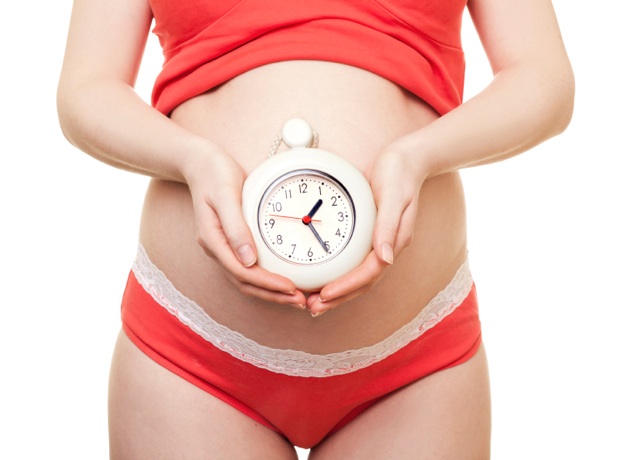SingaporeMotherhood | Pregnancy
July 2012
Bringing on Labour the Natural Way

Your due date is long past, you are tired of feeling pregnant and most of all, you can’t wait to meet the little bundle that has been incubating inside you for the last nine months.
Yet, despite your eagerness, there is still no sign of Baby. Soon, you start to second guess yourself. What if there is something wrong? What if my baby grows too big? Suddenly, it doesn’t seem like such a bad idea to schedule an induction.
But before you pick up the phone, consider this: unless there is a real medical emergency, the artificial induction of labour may bring about more problems than you bargain for.
[banner][/banner]
Any type of medical intervention brings with it a certain degree of risk, even in this day and age. Unfortunately, new mothers who are driven by self-doubt and an eagerness to deliver, often commit to having their babies induced artificially without understanding the pros and cons of such procedures.
Induction with the drug Pitocin (the synthetic form of oxytocin — a hormone that facilitates labour and breastfeeding) can result in a more prolonged and painful labour, neonatal jaundice in infants, as well as the increased likelihood of a Caesarean section for first-time mothers.
Induction via the artificial rupturing of membranes (sometimes called “breaking the waters”) does not always work and puts your baby at risk of infection.
So what are the alternatives if you do not want to be medically induced? In this article, we compile a list of natural methods for those itching to coax their little ones into the world. For obvious reasons, the techniques listed below are best attempted only when your baby has reached full term, and if you have been having a normal pregnancy without complications.
Acupuncture and Acupressure
The stimulation of acupuncture points can both help to induce labour and relieve labour pains. A study conducted by the University of North Carolina has shown that out of the 56 pregnant women who received acupuncture between their 39th and 41st weeks, 70 per cent went into labor naturally.
This is significant when compared to the 50 per cent of those who do so under standard conditions. The women who had acupuncture were also less likely to require a Caesarean section (39 per cent compared to 17 per cent).
If you have a phobia for needles, consult an acupuncturist on the relevant acupressure points to stimulate by using either your fingers or a wooden massage stick. The three key acupressure points commonly used are:
Hoku: This is located in the webbing between the thumb and forefinger, in between the first and second metacarpal bones.
Chih-yin: This is located approximately one-tenth of an inch behind the lateral corner of the smallest toe nails of either foot.
San-yin-chiao: To locate this point, place your left hand on your right leg with your pinkie finger just above the interior ankle bone. San-yin-chiao is located right beneath where your index finger lies.
Massage
Some studies have shown that a massage can raise your body’s level of oxytocin. Combine this relaxing technique with acupressure stimulation (see above) to double its effectiveness.
Walking
A walk in the park may just be what is needed to draw your baby down your pelvis. The pressure of the baby on your pelvis will then prime your cervix for labour. In fact, this is the reason why women in labour are often seen circulating the corridors of the maternity ward. Remember to exercise in moderation and not to the point of exhaustion. You will need to conserve your energy for the big day.
Sex
Although a visit to the gynaecologist may sound more attractive than having sex in your final weeks, doing the deed can actually help hasten the onset of labour. Sperm contains prostaglandins, which are hormones that assist in the thinning and dilation of the cervix, ripening it for labour. An orgasm releases oxytocin, which can further trigger contractions. Incidentally, this method has always been popular with fathers-to-be.
Evening Primrose Oil
Between the 36th and 38th weeks, many midwives in the United States encourage their patients to insert Evening Primrose Oil capsules into their vaginas to prepare for delivery. Evening Primrose Oil contains prostaglandins, which help the cervix to “ripen” and open. But be sure to talk to your doctor about your condition before trying herbal remedies. Women with conditions such as placenta previa should stay away from herbal supplements as complications can arise.
Raspberry Leaf Tea
Not to be confused with raspberry fruit tea, the red raspberry leaf tea is a traditional remedy of the Native Americans. A popular post-natal herbal drink in the USA, it is thought to tone the uterus and shrink it back to its normal size after delivery.
Many believe that drinking it prior to the due date can also help promote Braxton-Hicks contractions and induce labour. Rieko O., a mother of a nine-month-old baby, believes that her son’s earlier than expected birth at 36th week was due to the consumption of raspberry leaf tea only a few days earlier.
While there is no scientific research to support its effectiveness in inducing labour, a study has found that taking raspberry leaf tea during the last weeks of pregnancy can help to shorten the second stage of labour by making contractions more effective. As with Evening Primrose Oil, consult your doctor prior to consumption, especially if you have health problems in your pregnancy or are scheduled for a Caesarean operation.
Spicy Food
Some people believe that spicy food can help to jumpstart labour because it stimulates your stomach and consequently your womb. For more than 20 years, pregnant women have been flocking to Scalini’s Italian restaurant in Georgia, USA for their Eggplant Parmesan. The restaurant claims that this spicy dish has helped to induce more than 300 labours and promises results within 48 hours.
In Singapore where spicy food is consumed on a daily basis, this particular claim may be taken with a pinch of salt. In any case, this is a perfectly fine excuse to pay a visit to your favourite laksa or chili crab stall closer to your due date.
All content from this article, including images, cannot be reproduced without credits or written permission from SingaporeMotherhood.
Follow us on Facebook, Instagram, and Telegram for the latest article and promotion updates.






